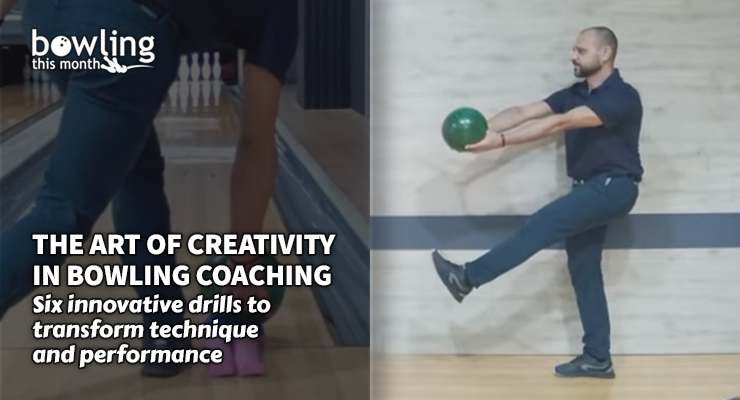Article Contents
- 1. Drill #1: The power of the bowling ball box
- 2. Drill #2: Balance challenge on the half medicine ball
- 3. Drill #3: Elastic band start drill
- 4. Drill #4: The no-release drill
- 5. Drill #5: The ball cup release drill
- 6. Drill #6: The hand and leg raise drill
- 7. Transforming coaching through creativity
Note: This article is only available to Bowling This Month subscribers.
In technical sports like bowling, success is determined not only by talent or repetition, but also by creativity. This includes the ability to design drills that challenge the body and mind in ways that replicate real-game demands. Creativity in coaching separates a good coach from a transformative one. It allows athletes to discover movement patterns, develop muscle memory, and adapt to dynamic conditions while maintaining precision and consistency.
Every drill, exercise, and innovative approach becomes a tool for unlocking an athlete’s full potential, helping them understand their own body, refine their movements, and execute with confidence under pressure. Creativity invites athletes to engage intellectually and physically, to solve problems, experiment, and internalize techniques in ways that traditional drills alone cannot achieve. In bowling, where the tiniest adjustments in timing, balance, and mechanics can have profound effects on results, creative coaching is essential.
The following six drills show how creative approaches can elevate performance, awareness, and consistency, providing coaches and athletes with the tools to reach their full potential. Bowlers who use these drills will develop strength, precision, awareness, and confidence that extends beyond the practice lane.
Drill #1: The power of the bowling ball box
This drill utilizes the simple yet powerful combination of a bowling ball box and a wall to replicate fundamental movements. By positioning the ball box against the wall, athletes can simulate their delivery and approach without worrying about lane conditions or ball reactions.
The drill allows athletes to focus on posture, body alignment, and the sequencing of movements at all stages of the shot, including the beginning, middle, and end of the delivery. The ball box provides tactile feedback for hand and arm placement, while the wall offers visual and physical cues for balance and alignment.
Coaches can guide athletes to adjust angles, stance, and hand positioning while performing repetitions, ensuring the body naturally adopts the correct mechanics. This drill develops awareness, reinforces ...
Already a premium member? Click here to log in.


